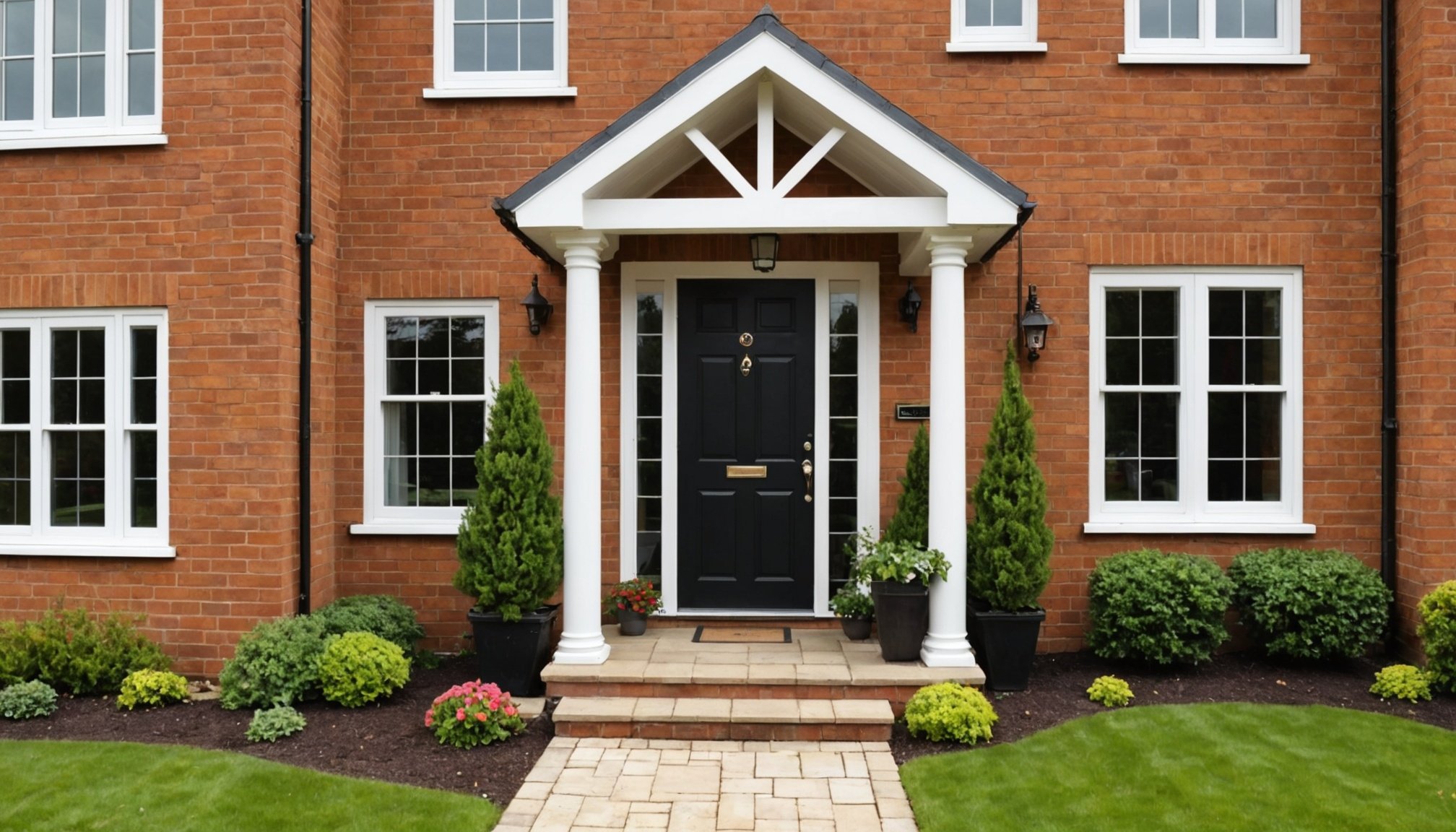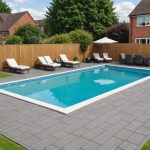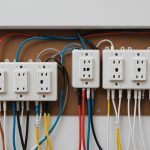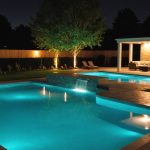As a UK homeowner, designing your entryway can do more than enhance aesthetics. It plays a significant role in maximizing heat retention and minimizing energy loss. Learn how strategic design choices, such as insulation techniques and material selection, can keep your home warm and reduce heating costs. Discover simple yet effective solutions that not only improve comfort but also contribute to sustainability and energy efficiency. It’s time to rethink your entryway for a more efficient home environment.
Importance of Entryway Design for Heat Retention
In the UK, heat loss through entryways is a common issue impacting energy efficiency in homes. Entryway design plays a crucial role in a home's thermal performance. Poorly insulated doors and frames can lead to significant heat loss, driving up energy bills and reducing comfort levels. An energy-efficient entryway can mitigate these issues by minimizing drafts and maintaining a stable indoor temperature.
En parallèle : Enhancing Sleep Hygiene in Smart Bedrooms: A Guide for UK Families to Harness Technology
The role of entryways in thermal performance is critical. They act as a barrier between the indoor and outdoor environments. A well-designed entryway can prevent heat from escaping during the colder months, thus enhancing the overall energy efficiency of a home. This involves using materials and construction techniques that reduce thermal bridging and improve insulation.
The benefits of an energy-efficient entryway are manifold. Not only does it contribute to lower energy costs, but it also enhances comfort by maintaining consistent indoor temperatures. Additionally, it supports environmental sustainability by reducing the carbon footprint associated with heating. Homeowners can achieve these benefits by investing in quality entryway design, focusing on materials and technologies that promote heat retention and energy efficiency.
Cela peut vous intéresser : Step-by-Step Guide to Installing a Rainwater Harvesting System in Your UK Townhouse
Insulation Techniques for Entryways
Enhancing the insulation of entryways is vital for achieving significant energy savings. Various insulation techniques can be employed to create effective thermal barriers. Choosing the right insulation materials is crucial. Popular options include fiberglass, foam board, and spray foam. Each offers unique benefits, such as fiberglass's affordability and spray foam's superior sealing properties.
Types of Insulation Materials
- Fiberglass: Known for its cost-effectiveness and ease of installation, fiberglass is a common choice for entryways. It is available in batts or rolls, fitting snugly between door frames.
- Foam Board: This rigid insulation provides excellent thermal resistance and is ideal for areas with limited space. It can be cut to size and installed directly onto surfaces.
- Spray Foam: Offering the best air-sealing capabilities, spray foam expands to fill gaps and cracks, creating a robust thermal barrier.
Installation Methods
To maximize effectiveness, proper installation is essential. Ensure insulation covers all potential gaps and overlaps at seams. Avoid compressing materials, as this reduces their insulating properties. Common mistakes include leaving gaps and not sealing edges, which can compromise the thermal barrier. Properly installed insulation in entryways can lead to substantial energy savings and improved comfort.
Choosing the Right Materials
Selecting the right entryway components is essential for enhancing energy efficiency. Energy-efficient materials for doors and windows significantly impact heat retention. Materials like uPVC and composite are popular choices due to their excellent insulating properties. These modern materials offer a marked improvement over traditional wood or metal, which often allow more heat transfer.
Sustainable materials play a vital role in modern entryway design. They not only contribute to energy savings but also reduce environmental impact. For instance, reclaimed wood and recycled steel are gaining popularity for their eco-friendly attributes. Using these materials supports sustainability without compromising on performance.
When comparing traditional and modern materials, it's evident that contemporary options provide superior energy retention. Traditional materials like wood, while aesthetically pleasing, often require more maintenance and may not insulate as effectively. In contrast, modern materials like fibreglass and aluminium-clad wood offer enhanced durability and insulation.
Investing in energy-efficient materials for entryways not only improves thermal performance but also adds value to a home by reducing energy costs and supporting environmental sustainability. This strategic choice can lead to a more comfortable and eco-friendly living space.
Design Principles for Maximizing Efficiency
To enhance entryway efficiency, several design principles should be considered. Focusing on key elements can significantly improve thermal performance. For instance, positioning doors away from direct wind exposure reduces heat loss. Incorporating layout optimization ensures that entryways function as effective barriers against the cold.
Key Design Elements
- Double Door Systems: Installing an inner and outer door creates an air buffer, minimizing heat transfer.
- Weather Stripping: Essential for sealing gaps around doors, preventing drafts and energy loss.
- Thermal Breaks: Using materials that interrupt the path of heat flow, such as insulated frames, enhances efficiency.
Importance of Layout
The layout plays a crucial role in minimizing heat loss. A well-thought-out design directs foot traffic in a way that limits the frequency of door openings. Entryways with vestibules or airlocks are excellent examples, providing an additional buffer zone.
Visual examples of effective entryway designs often include compact spaces with minimal direct exposure to the elements. These designs not only enhance thermal performance but also contribute to the overall aesthetic of the home, proving that functionality and style can coexist harmoniously.
Cost-effective Upgrades for UK Homeowners
Improving your home's energy efficiency doesn't have to break the bank. There are several cost-effective upgrades that UK homeowners can consider, particularly for entryways, which are key areas for preventing heat loss.
Affordable Insulation Solutions for Entryways
Investing in budget-friendly solutions like weather stripping and draught excluders can make a significant difference. These materials are inexpensive yet effective at sealing gaps around doors and frames, reducing drafts and improving thermal performance. For a more comprehensive solution, consider foam tape or door sweeps, which are also easy to install and highly effective.
Energy-efficient Lighting Options for Entryways
Switching to energy-efficient lighting is another simple yet impactful upgrade. LED bulbs are a popular choice due to their long lifespan and low energy consumption. They provide ample illumination while keeping electricity bills in check. Consider motion-sensor lights for added convenience and further energy savings.
DIY Options vs. Professional Services
When it comes to home improvement, homeowners can choose between DIY projects and hiring professionals. DIY options, like installing weather stripping or replacing light bulbs, are generally more affordable and can be done with minimal tools. However, for more complex tasks, such as installing new doors, professional services might be necessary to ensure optimal results.
Expert Insights on Entryway Efficiency
Gaining insights from experts and homeowners can provide valuable energy efficiency tips for enhancing entryway performance. Architects and energy efficiency specialists often recommend practical solutions that are both effective and accessible.
Expert Advice from Architects
Architects emphasize the importance of integrating energy efficiency into entryway design. They suggest using double glazing and thermal doors as key strategies. These elements not only reduce heat loss but also improve overall comfort. Experts also highlight the significance of proper sealing and materials selection, ensuring that entryways are as airtight as possible.
Homeowner Testimonials
Homeowners who have undertaken entryway renovations often share valuable experiences. For instance, one homeowner noted a significant reduction in energy bills after installing insulated doors and adding weather stripping. Another mentioned the comfort improvements achieved by upgrading to energy-efficient windows, which minimized drafts and maintained a more stable indoor temperature.
Case Studies of Successful Renovations
Case studies further illustrate the benefits of entryway efficiency improvements. In one case, a UK home reduced its heating costs by 20% following an entryway upgrade. This involved replacing old doors with modern, insulated alternatives and adding draught excluders. These examples reinforce the practicality and effectiveness of expert-recommended strategies.
The Role of Technology in Enhancing Entryways
Incorporating smart technology into entryways is revolutionizing home energy management. With advancements in home automation, homeowners can now optimise energy use effectively. Smart thermostats and sensors are pivotal in this transformation, providing real-time data on temperature and energy consumption.
Smart Technology for Energy Management
Smart thermostats adjust heating based on occupancy and weather forecasts, ensuring efficient energy use. These devices learn your schedule and preferences, reducing unnecessary heating when the house is empty. Sensors in entryways detect drafts and temperature fluctuations, providing alerts for immediate action.
Benefits of Smart Thermostats and Sensors
The integration of these technologies leads to significant energy savings. Homeowners can remotely control heating systems via mobile apps, enhancing convenience. Moreover, energy monitoring through these devices allows for detailed insights into consumption patterns, enabling informed decisions to further reduce energy use.
Future Trends in Home Technology
The future of home technology promises even greater energy efficiency. Emerging trends include AI-driven systems that predict energy needs with high precision. As technology evolves, entryways will become smarter, playing a crucial role in maintaining optimal indoor environments and reducing energy costs.
Regional Considerations for Entryway Design in the UK
Designing entryways in the UK requires careful consideration of the regional climate and UK-specific design requirements. The UK's diverse weather patterns, ranging from the damp and mild climate of the south to the colder, windier conditions in the north, significantly influence design choices. For instance, in regions with higher rainfall, materials that resist moisture and prevent water ingress are essential to maintain structural integrity and energy efficiency.
Local Building Regulations
When planning entryway designs, adherence to local regulations is crucial. These regulations ensure safety, accessibility, and energy efficiency standards are met. For example, regulations may dictate the minimum thermal performance for doors and windows, impacting material selection and design features. Compliance not only ensures legal adherence but also optimises the entryway's performance in varying climates.
Best Practices
Tailoring entryway designs to different UK regions involves understanding specific climate challenges. In coastal areas, corrosion-resistant materials are preferred to combat salt-laden winds. In contrast, northern regions benefit from enhanced insulation to counteract colder temperatures. By integrating these best practices, homeowners can achieve durable, efficient, and compliant entryways that cater to their regional needs.
Visual Inspirations and Resources
Exploring design inspiration can transform your entryway into a stunning focal point. A gallery of innovative entryway designs showcases diverse styles, from sleek modern aesthetics to charming rustic entrances. These visual guides provide a wealth of ideas, helping homeowners envision the possibilities for their own spaces.
For those seeking further design inspiration, numerous resources are available. Online platforms offer extensive collections of entryway aesthetics, featuring the latest trends and timeless classics. These resources not only spark creativity but also provide practical insights into material selection and layout optimization.
To assist in planning and visualising your entryway transformation, consider using digital tools. These platforms allow you to experiment with different designs, materials, and colours, offering a realistic preview of the final result. By utilising these resources, you can make informed decisions that align with your personal style and functional needs.
Whether you're drawn to minimalist elegance or bold statements, these visual guides and tools empower you to create an entryway that enhances both the beauty and energy efficiency of your home.











